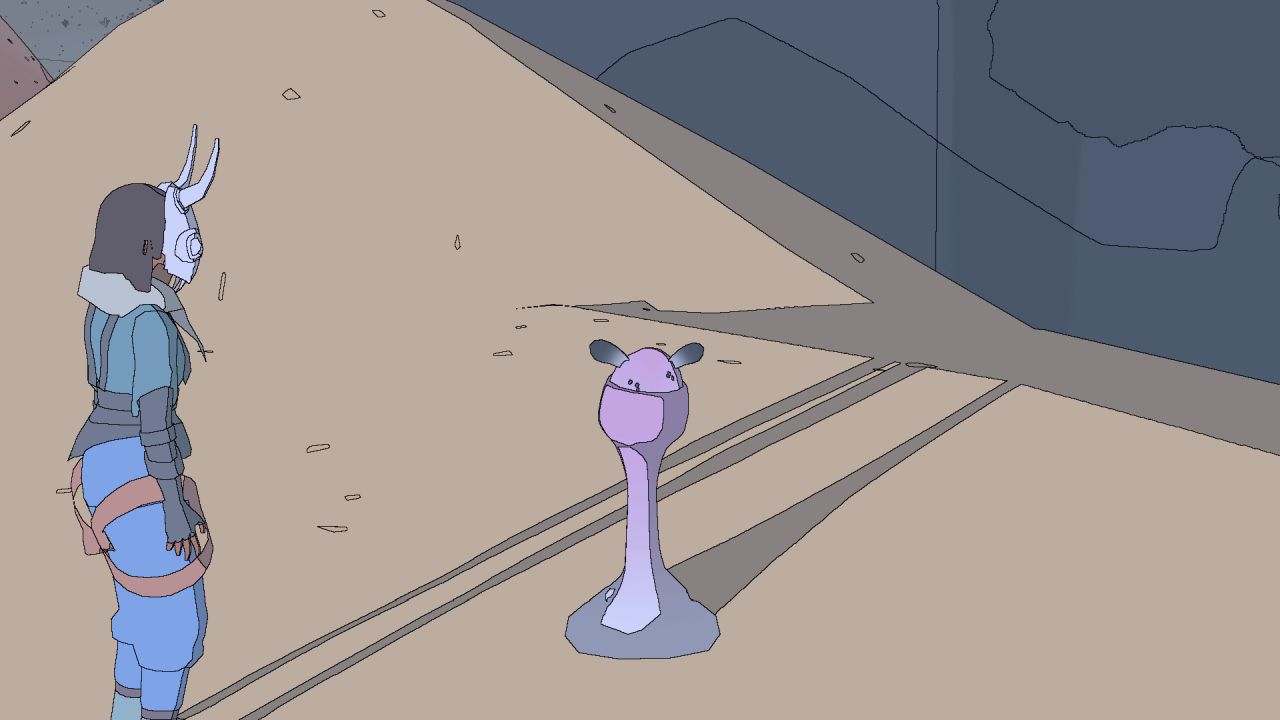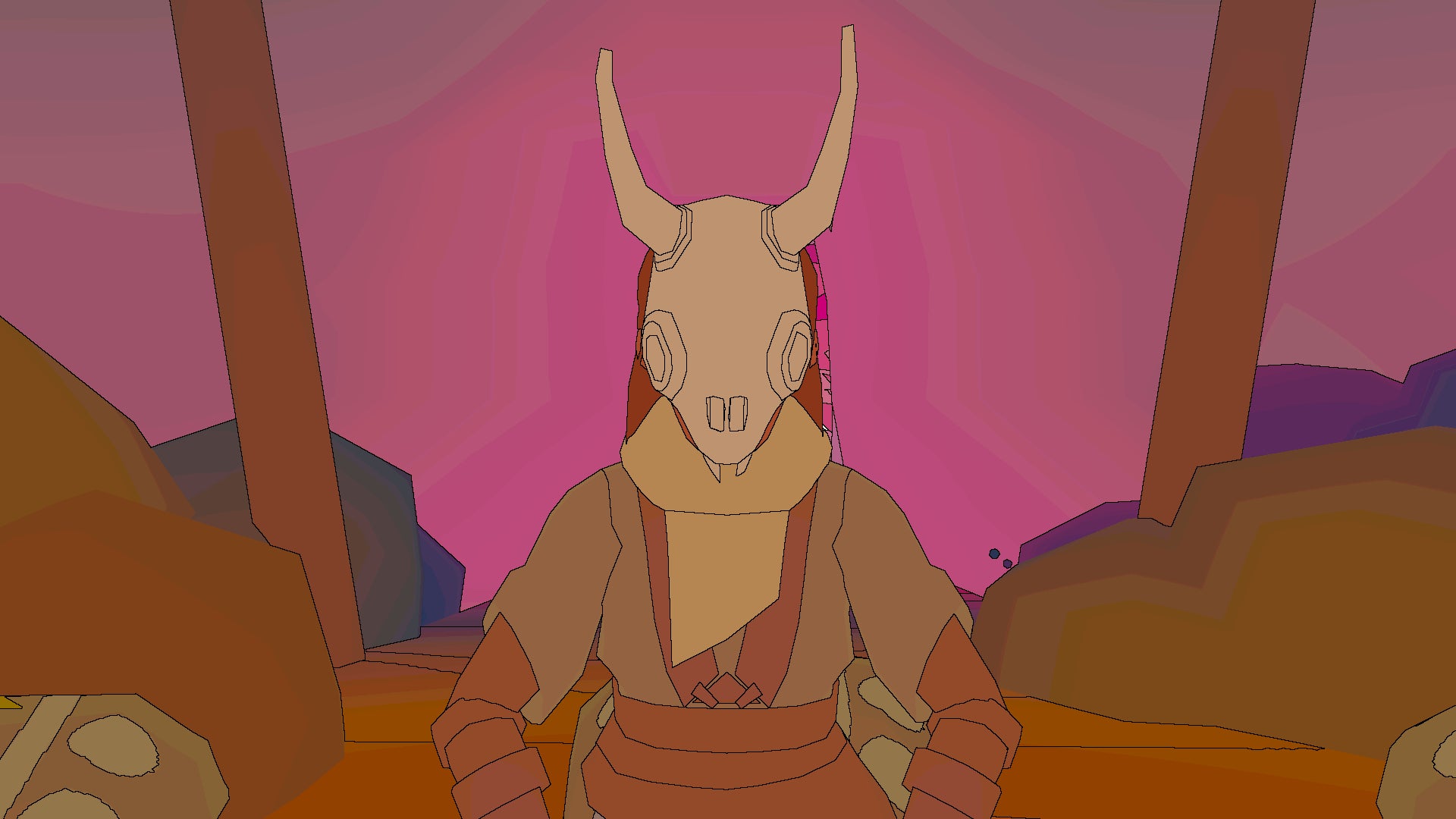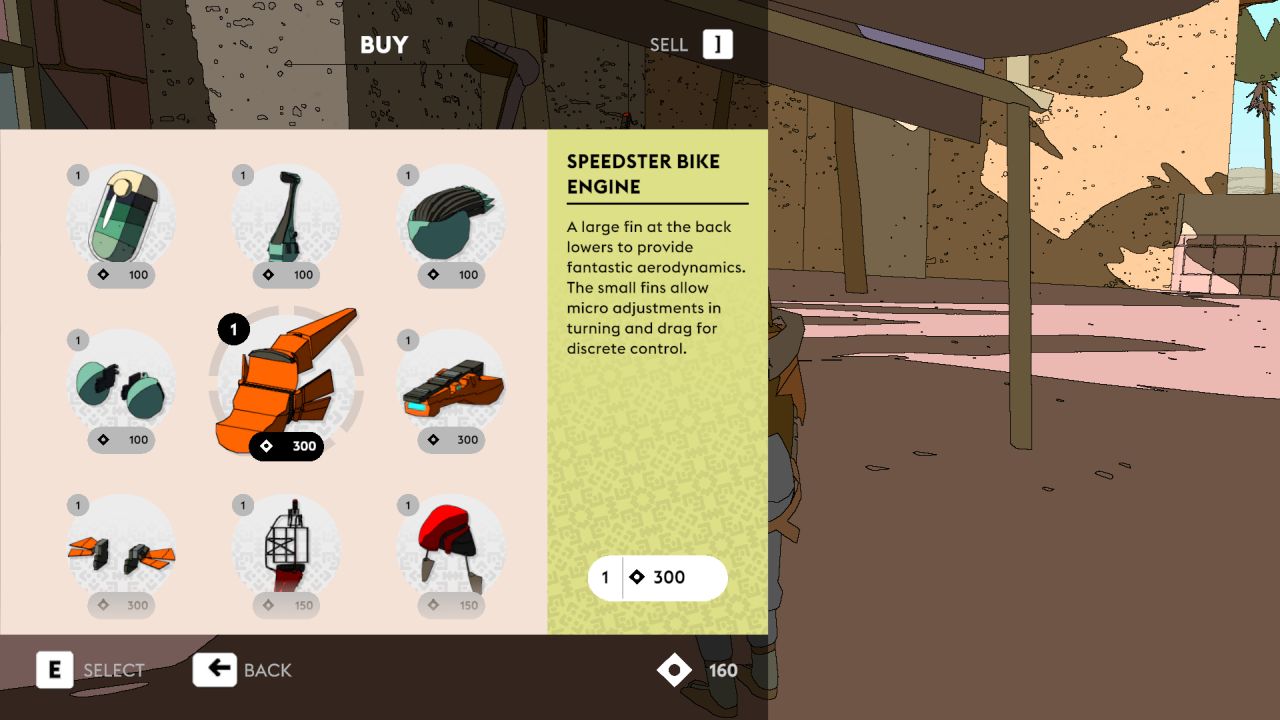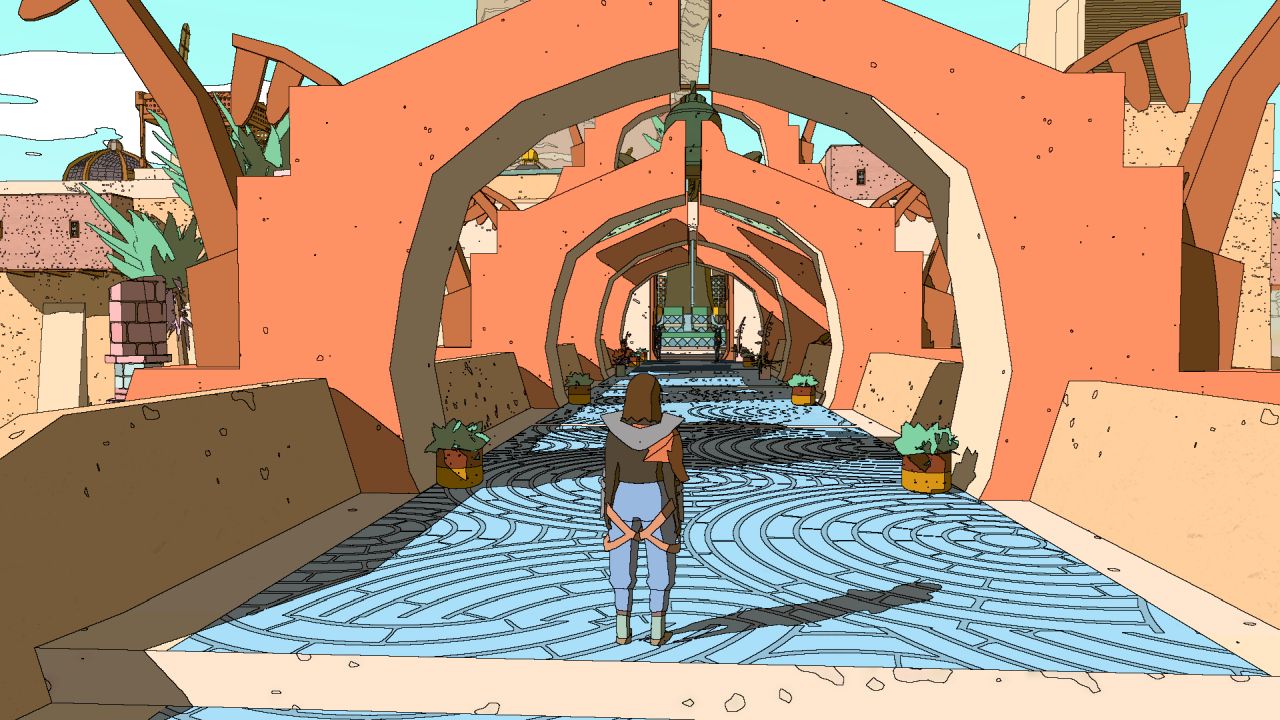
[ad_1]
As you might expect from a game set on a desert planet, Sable has a lot of sand. You traverse it on your floating motorbike as the titular character, a young woman who’s part of a nomadic culture where adolescents leave home to complete their Gliding. During this gap year of sorts, the Glider does odd jobs and explores the world until they figure out what they want to be for the rest of their life. Sand is a feature. But as they say, sand is coarse and rough and irritating, and it gets everywhere. Each individual grain of sand is small, but a pinch of sand in your bed will change how you feel about your entire sleep experience.
There are an unfortunate number of small, annoying things in Sable that add up to a constant grate on your skin. Which is itself annoying, because large swathes of Sable are good. It looks as fabulous in the flesh as it did in those early trailers and animated GIFs, with an art style inspired by European comics and particularly the artist Moebius. The world is traced in delicate, almost wire-frame lines, and there is a continuous day and night cycle. As you explore and map the various areas of your desert home, you see the world around you take on a different character at different times of day.
At night, with everything bathed in a blue-grey wash, I drove directly into the moonrise at the same time as coming upon a graveyard of wrecked spaceships. It was eerie – creepy, almost – and alien. In the day, those same ships turned out to be a mix of rusted metal and bright colours, and the whole place felt more mundane. There are a lot of appreciably weird bits like that in Sable. Lots of big strange statues, a fossilised forest, a landscape of what look like dragon skeletons, and a whole area of deep valleys around a group of towering rock spires. Among it all you’ll find the scattered remains of an ancient civilisation that predates yours, with huge mechanisms that you can still use today. There are also more of those wrecked ships scattered around, for you to break into and strip of scrap metal. They’re almost puzzle-dungeons, where you have to turn on different switches and get over moving platforms to find breadcrumbs about a disaster that happened hundreds of years ago.
Sable’s environmental storytelling is subtle and the writing in general is great. At heart, it’s a neat story about self-discovery, and you get little titbits about that from most people you meet. Sable herself could easily be a blank slate on which you could write your own feelings, but in dialogue with other characters you get snatches of Sable’s inner thoughts, and descriptions of how she feels about certain people, places and things. She’s smart and a bit sarcastic, and I like her. I had an impetus to make the right decision for her at the end of her Gliding. Which is a shame, because by the time it got to that point I just couldn’t be arsed.

Sable is a game that doesn’t want to hold your hand. It gives you a hoverbike and an open skyline and says: “There you go. Do your Gliding, then.” But your bike is rubbish and the other tools you get to explore don’t really help.
Your bike is supposed to be your friend. Simoon (for that is her name) is sentient. You can call Simoon to you if you ever lose her, but instead of the thing fantasy RPGs do, where you whistle and your horse trots up from whichever direction you’re not looking, Simoon pathfinds and drives to you in real time. This is an abbreviated way of saying, “Simoon will get stuck and never arrive, so you have to decide if you want to walk for a bit, or fast travel to the nearest known location to respawn Simoon.”

One weird side quest you can undertake is collecting eggs for the Chum Queen, a big glowing creature that is like a terrestrial axolotl. If you find Chum Worms hidden around the place, they will bury themselves in the ground and extrude an egg (in a frankly obscene way if you ask me). You should do this, though, because in return the Queen raises your stamina, and this makes all the climbing a lot easier.
Driving around also wears your patience down. It doesn’t feel fast or slick. You don’t get effects in air to imply you’re speeding around like a cool badass. Simoon feels slow. She also clips into the ground quite a lot, and will sometimes trip over seemingly nothing, and spin on her nose for a bit. You can buy different parts for her that change how Simoon is to drive based on Speed, Acceleration and Handling stats, which can lead to some interesting combinations. I made mine into a ridiculous little boat thing that wobbled a lot. But these parts are bought from merchants, and you can’t see what stats they confer at point of sale. You have to read the prose description, guess what that might mean, and then hope you didn’t spunk a bunch of money on a part that turns out to be marginally worse than what you already had.

Luckily, driving your bike is only half of what you do. The other half is spent climbing up things, paying careful attention to your stamina bar, and jumping off them, either with its no-kill fall or Sable’s red levitation bubble that lets you float over gaps Breath Of The Wild-style. This is sometimes infuriating. You can jump and ball-float into surfaces to start a climb from higher up, but sometimes the game will just decide it doesn’t want to let you do that today, and you bounce off and partially clip through a cliff face until you float into a surface you can stand on. Because the game is giving you a free hand, there’s no indication that you’ve started your climb attempt in the correct place, and sometimes you’ll get half way up something only to realise you’ve totally fucked it and need to start again.
Once you do climb to where you’re going, you can take a look around to spot places of interest. While the area’s cartographer is often on hand to sell you a map and give local tips, you also spend a lot of time straining your eyes for smoke rising from a fire, or light peaking out from a piece of dormant tech. Sometimes the draw distance means you see fuck all. Sometimes the cartographer won’t have given you a cardinal direction to start your search. Sometimes you find the right thing, but the manual marking tool, mapped to RB, won’t reach it because it’s too far away. Or it will reach it but you’re not sure if you’ve put your marker in the right place, because the depth perception on said tool is a nightmare at long range. Also, when you open it, the camera snaps to looking straight at the ground, and it is disorientating every single time.

It’s not just navigation woes that frustrate in Sable. Sometimes surfaces flicker in and out of existence. Reeds in water appear to reflect whatever part of the world is in front of them. Interaction buttons might not appear above someone you need to talk to until you run around a bit first either, while other times the person you’re talking to will now have the name of the person you talked to just a minute ago. Also, every time I opened the menu, I first got a half-second snapshot of a still from elsewhere in the game, seemingly at random: the options menu; part of a cinematic; me just standing around in the desert. That was particularly weird.
The way you pick a forever job in Sable is to earn three badges for each profession. Doing favours for Machinists will get you Machinist badges, and therefore a Machinist mask, for example. Some of these side quests are fun and cool. Others involve finding beetles and making them to fall over. And though there is a lot to find in Sable (more than I did by the end) the process of finding anything is so laborious that by the time you get there, and realise you’ll have to do a platforming puzzle, there is a strong temptation to go home again immediately. In the end, I made Sable a Machinist, because at least then, I thought, she’d be able to improve someone else’s fucking bike.

None of the irritating things are huge, and in a few patches time Sable will probably be in much better shape. But right now, there are a lot of small irritants to get under your skin all at once. It is, I’d venture to say, a perfect Game Pass game. I simultaneously loved the beauty and strangeness of Sable’s world, but was tormented by having to exist in it.
[ad_2]





